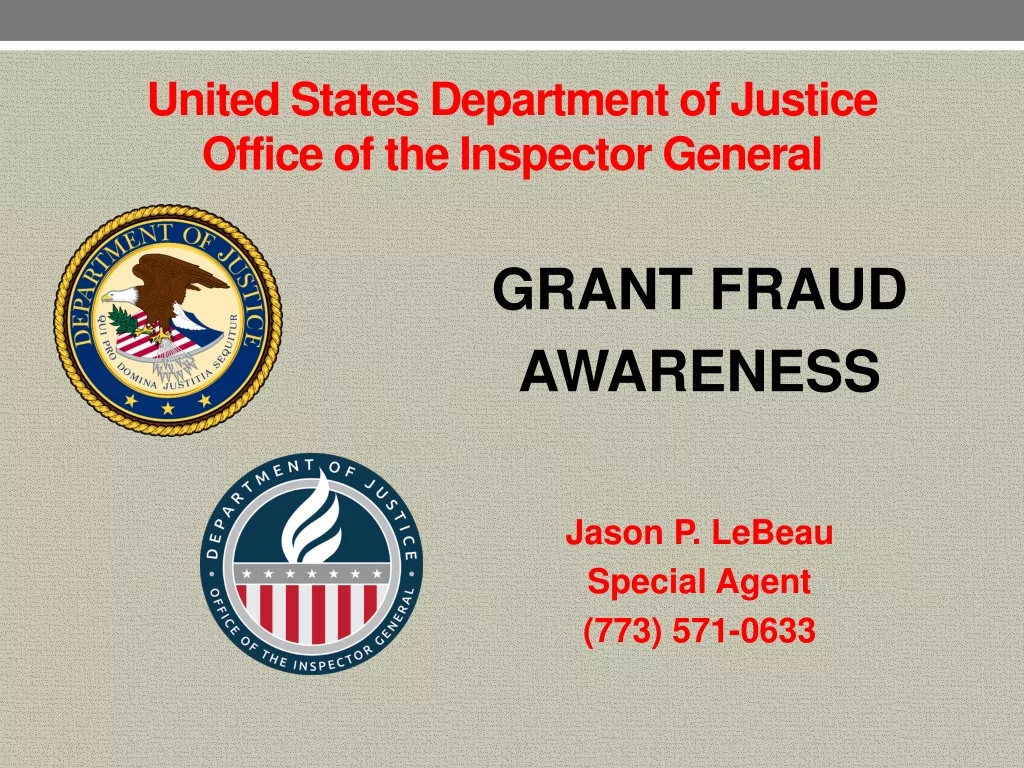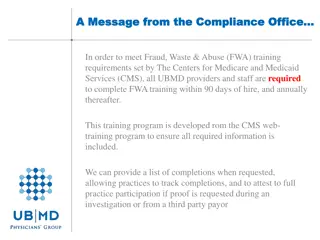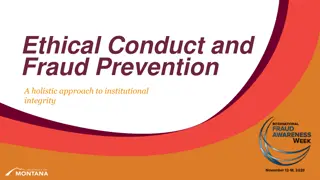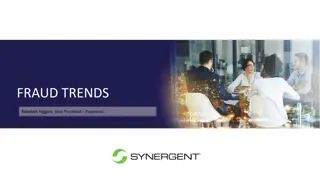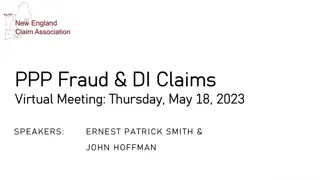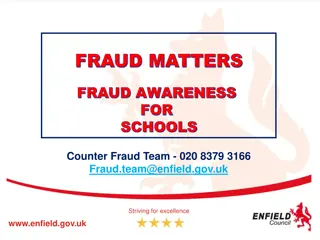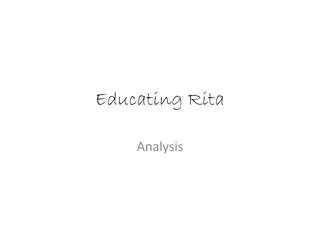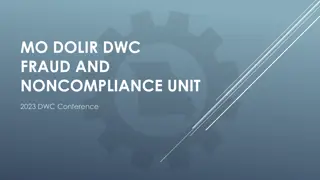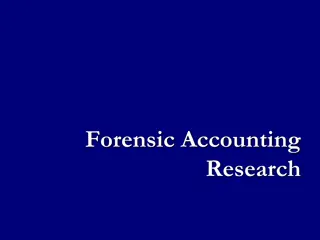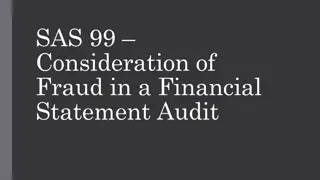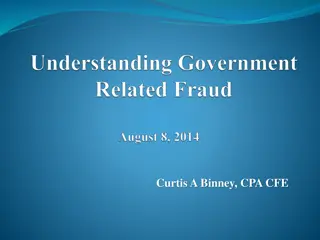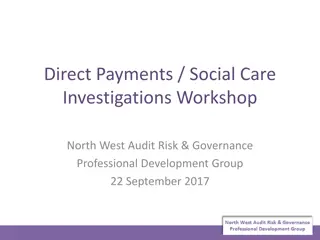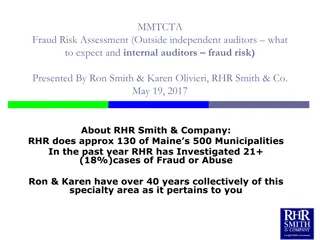Uncovering Fraud: The Rita Crundwell Case Study
Rita Crundwell, the trusted City Comptroller of Dixon, IL, embezzled nearly $54 million over 21 years, setting a record for municipal government theft. She deceived by opening a hidden bank account, creating fake projects and invoices, and misusing city funds. This case highlights common characteristics and red flags of perpetrators, emphasizing the importance of internal controls and vigilance in preventing fraud.
Download Presentation

Please find below an Image/Link to download the presentation.
The content on the website is provided AS IS for your information and personal use only. It may not be sold, licensed, or shared on other websites without obtaining consent from the author.If you encounter any issues during the download, it is possible that the publisher has removed the file from their server.
You are allowed to download the files provided on this website for personal or commercial use, subject to the condition that they are used lawfully. All files are the property of their respective owners.
The content on the website is provided AS IS for your information and personal use only. It may not be sold, licensed, or shared on other websites without obtaining consent from the author.
E N D
Presentation Transcript
Kathy Kincaid, SVP Carrollton Bank kathykincaid@carrolltonbanking.com
Agenda Overview Case Study Characteristics of Perpetrators Red Flags for Fraud How Can Your Bank Help? Internal Controls Questions
City Comptroller Dixon, IL Trusted city employee for over 40 years Well regarded in the community and by her co-workers Had a passion for breeding and showing quarter horses
City Comptroller Dixon, IL Largest amount of money embezzled from a municipal government ever Nearly $54 million taken over 21 years Embezzlement started in 1991 and ended with her arrest in 2012 Why did she do it?
City Comptroller Dixon, IL Opened bank account in the name of the City Reserve Sewer Capital Development Account (RSCDA) Rita was the only signer on the account that was never setup on the City s GL Transfers to the account were made from six legitimate City accounts Fictious projects and invoices were created Manual checks were written debiting capital outlay expense and crediting cash Checks deposited to the RSCDA then written from the RSCDA for her expenses
Common Characteristics of Perpetrators According to the Association of Certified Fraud Examiners An employee Being at the same job for more than 10 years Worked in the accounting department Committed the fraud within the 36-40 age range Worked alone in committing the fraud No criminal background
Red Flags For Fraud Employee Red Flags Lifestyle or behavioral change Significant personal debt and credit problems Refusal to take vacation or sick leave Lack of segregation of duties
Red Flags For Fraud Management Red Flags Reluctance to work with auditors High employee turnover Weak internal controls Decisions dominated by an individual Service contracts with no product
Red Flags For Fraud Cash Receipts and Disbursements No cash receipt log Lack of control over required signatures Uncontrolled access to blank checks Lack of segregation of key duties
Red Flags For Fraud Records and Reports Excessive cash entries or adjustments No supporting documentation for adjusting entries Discrepancies between bank deposits and postings Incomplete or untimely bank reconciliations
How Can Your Bank Help? Use your banker as a resource Understand the products and services available to mitigate fraud Use check/ACH positive pay- not new, but effective. The processes matches the account number, check number and dollar amount of clearing checks against an issue file. If the bank receives a check that does not match the information, it is identified as an exception item. Payee positive pay is an enhanced service that also requires the validation of the payee name. Avoid reverse positive pay. Default decision should be to return exception items. Consider ACH debit blocks and filters. Blocks prevent all disbursements from an account while filters allow transactions to post under predetermined conditions. Take advantage of Reconciliation Tools. Detailed reporting can assist in reconciliation of bank accounts. Inquire about UPIC Universal Payment Identification Code used in place of the actual account number.
How Can Your Bank Help? Work with your bank to establish user entitlements for online banking functions. Ideally access should include multi-factor authentication View only access Bill pay initiate vs. approve Positive Pay separation of duties and decisioning of exception items ACH/Wire Transfer initiate, approve, release with dollar limitations
Internal Controls Conduct surprise audits and annual reviews of procedures Provide for the physical security of all checks. Maintain check images over paper copies. Keep check stock in a locked and secure location with a formal inventory listing. Provide for temporary physical security of electronically deposited checks and timely destruction of the items. Ensure the appropriate security over signature stamps and software. Require additional review for all checks over a specified amount. Ensure segregation of duties amount staff initiating, authorizing, preparing, signing, and mailing payments and reconciling bank statements.
Internal Controls Review signature cards and authority levels whenever any change occurs. Remove staff from transaction authority/online access immediately upon resignation. Consolidate or eliminate bank accounts that are not frequently utilized. Determine that appropriate controls and procedures are in place if employees are working remotely.
Questions? Kathy Kincaid Carrollton Bank (217) 793-5071 kathykincaid@carrolltonbanking.com









